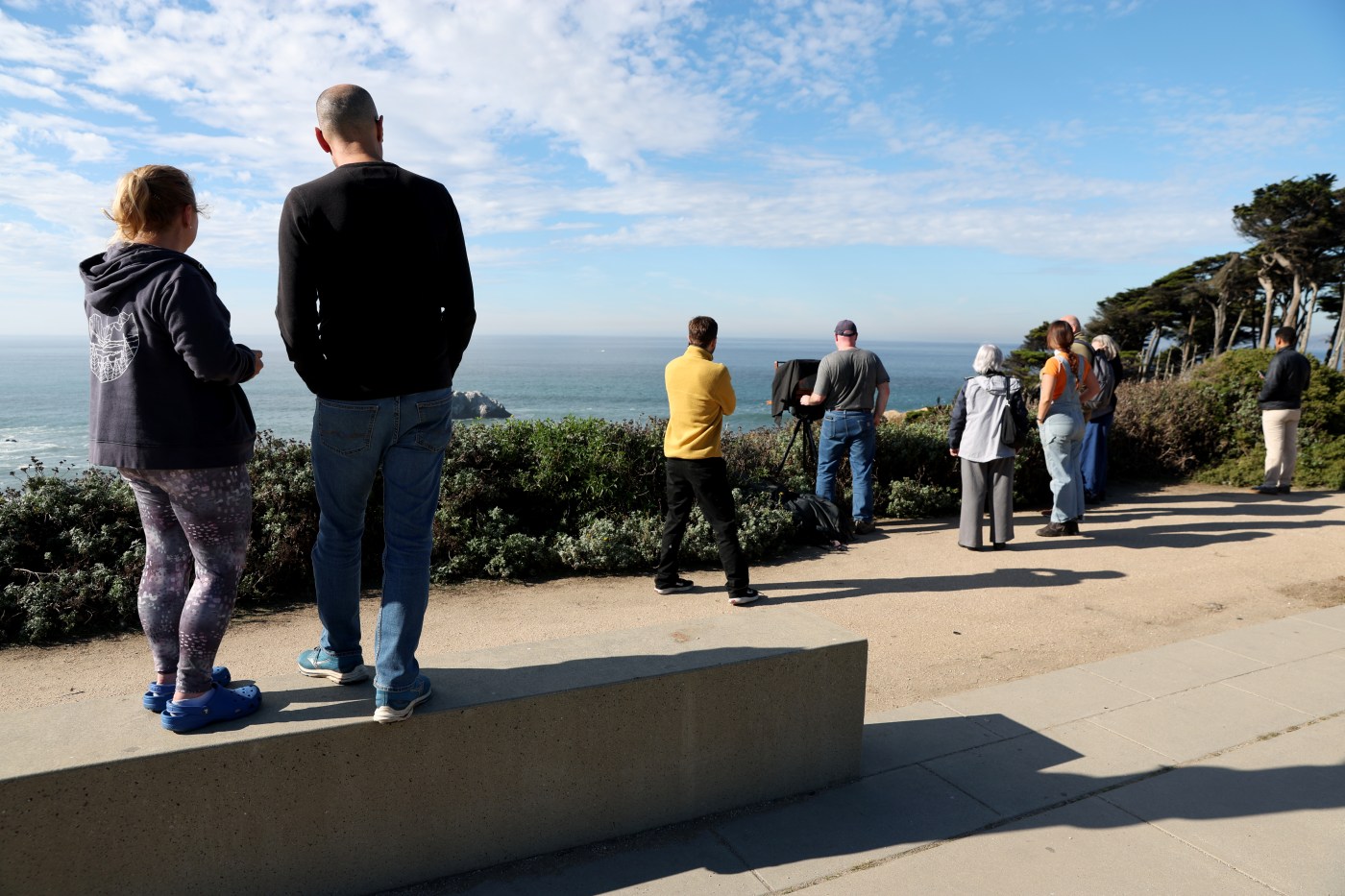It was a sunny, typical Thursday morning, and suddenly messages popped up on millions of cell phones across the Bay Area and Northern California: “Tsunami warning… you are in danger… move to higher ground or inland now.”
The rare bulletin at 10:49 a.m. from NOAA — the National Oceanic and Atmospheric Administration — came after a 7.0 earthquake off the Humboldt County coast. It caused police to scramble, and local officials to set off tsunami warning sirens along the coast and around San Francisco Bay. Berkeley ordered evacuations along its waterfront. BART stopped trains. Anxiety levels jumped.
Then, an hour later, it was all cancelled.
The bulletin, which came from NOAA’s National Tsunami Warning Center in Palmer, Alaska, was the first such alert in the Bay Area since Jan. 15, 2022, when an undersea volcano suddenly erupted in the Pacific Ocean near Tonga, prompting tsunami advisories and evacuations along the California coast, including San Francisco and Monterey Bay. In a few spots, beaches closed as surging water flooded harbors and low-lying coastal areas.
But there were no such surges or big waves this time. Did somebody make a mistake?
No, experts said Thursday afternoon.
“They were being cautious,” said Amy Williamson, a research scientist at the UC Berkeley Seismology Lab.
“They would rather have a warning and retract it an hour later than to have no warning at all and have people near the coast line suffer the consequences.”
A tsunami is a large wave caused by a sudden displacement in the ocean. Coming from the Japanese word for “harbor wave,” most tsunamis are caused by earthquakes, although some can be caused by underwater landslides, volcanic explosions or even asteroids hitting the water.
In previous tsunami alerts, like the one in 2011 that came after the massive Fukushima earthquake in Japan, scientists have time to measure the size of the waves as they hit islands and a network of tsunami-measuring buoys far off America’s West Coast. Researchers can estimate the time the waves will hit and how big they will be.
But on Thursday, the 7.0 quake was located very close to shore, only about 40 miles from the Humboldt County coast. There are no islands or buoys between the epicenter and the land.
“Because this quake was so close and sufficiently large and shook for a long enough time, the warning was issued out of an abundance of caution,” said Brian Garcia, warning coordination meteorologist for the National Weather Service’s Bay Area office. “If we don’t issue a warning and it generates a tsunami, then you are putting people’s lives at risk. We want to make sure people don’t die from a tsunami.
“This is imperfect information when we are getting it in real time,” he added. “It’s about making an executive decision very quickly.”
NOAA issued the warning from Davenport, along Santa Cruz County’s northern coast, to Douglas, Oregon.
Tsunamis are rare but can be deadly. In 1964, a 9.2 magnitude earthquake in Alaska triggered a tsunami that killed 17 people on the West Coast, including 11 in Crescent City, near the California-Oregon border.
In 2011, the 9.0 Fukushima earthquake off Japan created tsunami waves that killed 15,894 people. A 2004 earthquake in the Indian Ocean, at 9.1 magnitude, triggered waves that killed 230,000 people in Indonesia and other countries.
The 2011 tsunami also sent a tidal surge several feet high across the Northern California coast. It flipped boats and wrecked wooden docks at Santa Cruz Harbor, causing $25 million damage. It also killed a man in Crescent City who was swept out to sea.
There are three levels of tsunami alerts.
A warning means that a tsunami is imminent or expected with dangerous coastal flooding. People are advised to evacuate to higher ground or a tall building immediately. An advisory means that there is a tsunami that may produce strong waves and currents, but no major flooding is expected.
And a watch means that there has been a distant event, such as an earthquake or underwater landslide, that might create a tsunami. In that case, people are advised to be alert and wait for more information.
When an earthquake hits, seismographs send information about its size, location and depth to a network of government computers. That information also goes to America’s two NOAA tsunami warning centers, in Alaska and Honolulu.
Officials there have computer models that help predict tsunami risk. Earthquakes on subduction faults, where two plates collide and one is thrust beneath another, have a larger risk of creating big tsunamis than earthquakes on strike-slip faults, like the San Andreas, where to plates are rubbing alongside each other.
Thursday’s quake was on a strike-slip fault, but was near the south end of the Cascadia Subduction Zone, and area that in past centuries has generated massive earthquakes and tsunamis that sent water miles inland.
With only a few minutes to act, NOAA officials issued the warning. When tidal gauges did not show rising ocean levels, and the closest buoy in the federal warning system, about 130 miles southwest of the epicenter, showed only a 1 centimeter rise in the sea height, they called it off.
“We are mindful that evacuations can be disruptive. We know alerts can be alarming,” said Amy Palmer, a spokeswoman for the California Office of Emergency Services. “When an earthquake is in Japan we have a lot of time. When it hits close to the California coast, there’s very little time. People did the right thing.”












